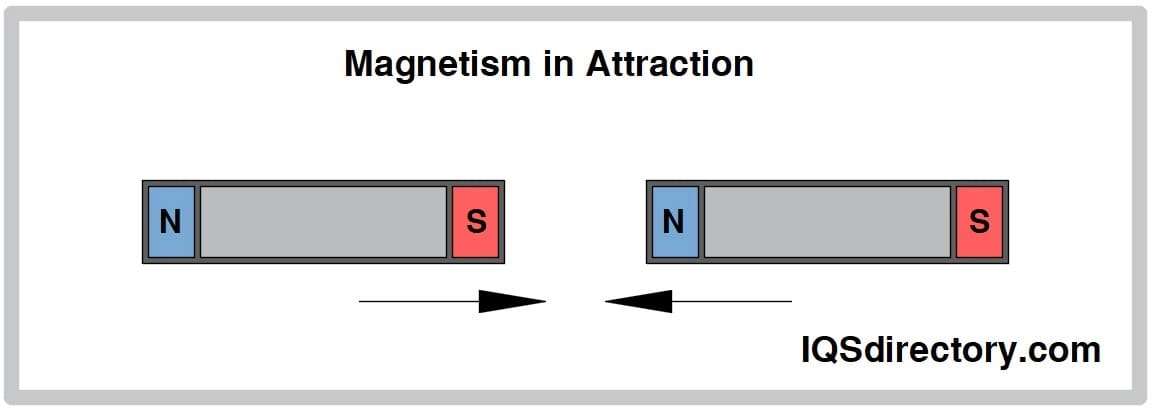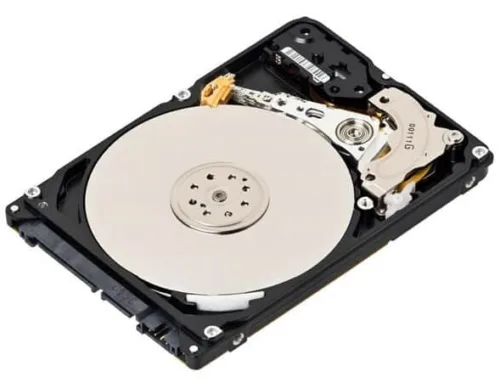What is Magnetism
Magnetism is a natural physical phenomenon where materials exert an invisible force, known as a magnetic force, on certain metals or on moving electric charges. This force is the result of the motion of charged particles—mainly electrons—within atoms. In simple terms, magnetism is what makes a magnet pull iron toward it or make two magnets snap together or push apart.
Definition and Nature of Magnetism
At its core, magnetism comes from the alignment and motion of electrons around atomic nuclei. When enough electrons in a material move or align in the same direction, their tiny magnetic fields combine, creating a stronger overall magnetic field. Magnetic fields are what you “feel” when two magnets either pull together or resist one another.
Types of Magnets
Magnets come in different forms, each with distinct properties and uses:
- Natural magnets – Found in nature, such as lodestone, which is naturally magnetized iron ore.
- Electromagnets – Produced by running electric current through a coil of wire, often wrapped around a core material like iron. Their strength can be adjusted by changing the current.
- Permanent magnets – Manufactured materials that keep their magnetism over time without the need for electric current. These include neodymium, ferrite, and samarium-cobalt magnets. (Learn more about what is permanent magnetism here.)
Overview of Magnetic Fields and Magnetic Forces
Every magnet produces a magnetic field—an invisible “zone of influence” around it where magnetic forces act. The field is strongest near the magnet’s poles and weakens with distance. Magnetic forces can:
- Attract certain metals like iron, cobalt, and nickel.
- Repel or attract another magnet depending on how their poles are aligned.
Magnetic fields are often visualized with field lines, which flow from the magnet’s north pole to its south pole. These lines illustrate both the strength and direction of the magnetic force, helping engineers and scientists design better motors, sensors, and other technology.
The Fundamental Laws of Magnetism

Understanding the main laws of magnetism is key to knowing how magnets behave and why they’re so widely used in everyday life and industry. Here’s a quick, clear breakdown of the four core principles.
The Law of Magnetic Poles
Magnets have two poles — north and south. Opposite poles attract, and like poles repel. Think of it like pushing two same-pole ends of bar magnets together — they resist. Flip one around, and they snap together. This simple rule is the base for magnetic compasses, motors, and countless devices.
The Law of Magnetic Force
The force between magnets depends on their strength and the distance between them. The closer and stronger they are, the more powerful the pull or push. This also explains why you can feel a magnet “grab” a metal tool when it gets close. Magnetic force always acts along the line between the poles and has both intensity and direction.
The Law of Magnetic Field Lines
Magnetic field lines show the direction and reach of a magnet’s force. They always run from the north pole to the south pole outside the magnet and never cross each other. The closer the lines, the stronger the field in that area. Iron filings around a bar magnet offer an easy visual — the filings line up to make the “invisible” field visible.
The Law of Electromagnetic Induction
Electricity and magnetism are closely linked. When a magnetic field changes near a conductor, it creates an electric current — this is the law of electromagnetic induction. It’s the science behind generators, transformers, and many sensors. Materials that respond well to both electric and magnetic changes, like certain ferromagnetic materials, are critical in this process.
Magnetic Materials and Their Properties
Magnetic materials respond to magnetic fields in different ways, and knowing which type you’re working with matters a lot in real-world applications. We usually sort them into three main categories:
- Ferromagnetic materials – These are the strong ones. Iron, nickel, cobalt, and many of their alloys can be magnetized easily and hold that magnetism well. They’re the go-to choice for motors, transformers, and magnetic storage because the laws of magnetism work on them with maximum effect.
- Paramagnetic materials – These respond weakly to magnetic fields and lose that magnetism when the field is removed. Aluminum and platinum fall into this group. They’re not used for permanent magnets but can be useful in sensors or precision instruments.
- Diamagnetic materials – These push back against magnetic fields ever so slightly. Copper, gold, and bismuth are examples. While they’re generally considered “non-magnetic,” this weak repulsion can be useful in specialized tech.
The laws of magnetism, like pole attraction/repulsion and magnetic force, apply differently to each group depending on how their atoms react to magnetic fields. In industry, picking the right material makes a big difference — high-strength ferromagnetic steels for generators, lightweight paramagnetic alloys for aerospace instruments, and non-magnetic diamagnetic metals for shielding sensitive equipment.
Practical Applications of the Laws of Magnetism

Magnetism powers many of the devices we use every day and drives entire industries. The principles—magnetic poles, magnetic force, field lines, and electromagnetic induction—show up in countless ways.
Electronics and Motors
Electric motors, speakers, and sensors all rely on magnetic fields to convert electrical energy into movement or sound. From factory automation to everyday appliances, the laws of magnetism control how efficiently these systems run.
Transformers and Power Systems
Transformers use electromagnetic induction to step voltage up or down, making long-distance power transmission possible. Precision in the magnetic core material plays a big role in reducing energy loss.
Data Storage
Hard drives, magnetic tapes, and credit card strips store information by magnetizing tiny areas on their surface. The better the magnetic material, the longer the data stays secure and the faster it can be read or written.
Medical Devices
MRI machines use powerful magnets to generate images of the body without radiation. The stability, strength, and purity of the magnets directly affect image quality and patient safety.
Sustainable Energy
Wind turbines use large permanent magnets inside generators to produce electricity. High-grade magnetic materials improve output and reduce maintenance, supporting cleaner energy solutions.
Role of NBAEM Magnetic Materials
NBAEM supplies high-performance permanent magnets and magnetic alloys designed for these applications. By focusing on tight material tolerances, corrosion resistance, and consistent magnetic strength, NBAEM ensures U.S. manufacturers get parts that meet demanding industry standards—whether for automotive motors, renewable energy projects, or precision medical imaging systems.
Understanding Magnetism in the Context of NBAEM Products
At NBAEM, the way we approach magnetism isn’t just about theory — it’s built into every product we supply. We source high-quality magnetic materials using strict selection standards, focusing on purity, consistency, and proven performance. This ensures the magnets meet U.S. industry needs across electronics, energy, medical, and manufacturing applications.
Our manufacturing process combines precision engineering with the fundamentals of the laws of magnetism. For example, when designing permanent magnets for motors, we optimize the magnetic pole arrangement (Law of Magnetic Poles) to increase efficiency and torque. In transformers and sensors, our materials are selected to maximize electromagnetic induction while keeping power loss low.
Real-world examples from our customers in the U.S.:
- Wind turbines: Specialized high-strength permanent magnets improve power output in both low and high wind speeds.
- Automotive motors: Custom-shaped magnets designed for strong, stable fields help extend motor life.
- MRI equipment: Controlled magnetic field uniformity ensures clear imaging and reliable performance.
Knowing how the principles of magnetism apply to materials is key to choosing the right product. The wrong grade or type of magnet can mean lower efficiency, overheating, or even failure of critical components. By understanding the core magnetic laws — from pole interactions to field behavior — engineers and buyers can match material properties to their exact application for reliability and long-term performance.
Common Myths and Misconceptions About Magnetism
A lot of what people think they know about magnetism isn’t quite right. Let’s clear up some of the most common myths with simple, fact-backed explanations based on the laws of magnetism.
Myth 1: Magnets lose their strength quickly
- Fact: Permanent magnets, like those made from neodymium or ferrite, can hold their magnetic strength for decades.
- They only weaken noticeably if they are exposed to high heat, powerful opposing magnetic fields, or physical damage.
Myth 2: Magnetic fields are “magic”
- Fact: Magnetic fields follow clear, measurable principles—like the Law of Magnetic Poles and the Law of Magnetic Forces.
- The force comes from the alignment of electrons at the atomic level, not anything supernatural.
Myth 3: Any metal can become a magnet
- Fact: Only certain materials—mainly ferromagnetic ones like iron, nickel, cobalt, and some alloys—can be magnetized. Aluminum, copper, and most stainless steels are not naturally magnetic.
Myth 4: Magnets can work through any material
- Fact: Magnetic fields can pass through most non-magnetic materials, like wood or plastic, but the force weakens with distance and certain materials (like thick steel sheets) can block or redirect it.
Myth 5: Magnets pull objects from far away
- Fact: The Law of Magnetic Force shows that strength drops rapidly as distance increases. A magnet that can lift a wrench from an inch away won’t move it from across the room.
Clearing up these misunderstandings is key to using magnetic materials more effectively—whether it’s for home projects, electronics, or industrial applications.
FAQs About The Laws of Magnetism
What causes magnetism at the atomic level
Magnetism comes from the movement of electrons in atoms. Each electron has a tiny magnetic field because it spins and orbits the nucleus. In most materials, these fields cancel one another out. In magnetic materials like iron, nickel, and cobalt, the fields line up in the same direction, creating a strong overall magnetic field.
Can magnets be made from any metal
No. Only certain metals are naturally magnetic, like iron, cobalt, and nickel. Some alloys, like certain grades of steel, can also be magnetized. Metals such as copper, aluminum, and gold are not magnetic but can play a role in electromagnetic systems.
How does temperature affect magnetism
- Heat: When heated past a certain point (the Curie temperature), a magnet loses its magnetism because the aligned electrons become disordered.
- Cold: Cooling a magnet usually helps it keep its strength, but extreme cold can make it brittle.
Can magnets lose strength over time
Yes, but it’s usually slow unless exposed to:
- High heat
- Strong opposing magnetic fields
- Physical shock or damage
Are magnetic fields harmful to people
Normal magnets aren’t harmful. However, strong magnetic fields—like those in industrial equipment or MRI machines—need safety precautions because they can affect pacemakers, electronics, and magnetic storage devices.
What is the difference between a permanent magnet and an electromagnet
- Permanent magnets: Always magnetic, no power needed.
- Electromagnets: Magnetic only when electric current flows through them; can be turned on and off.
Can you create a stronger magnet at home
Yes. Wrapping insulated wire around an iron nail and running a current through it makes an electromagnet. The more coils and the higher the current, the stronger the magnet—just take care with electricity.





Leave A Comment